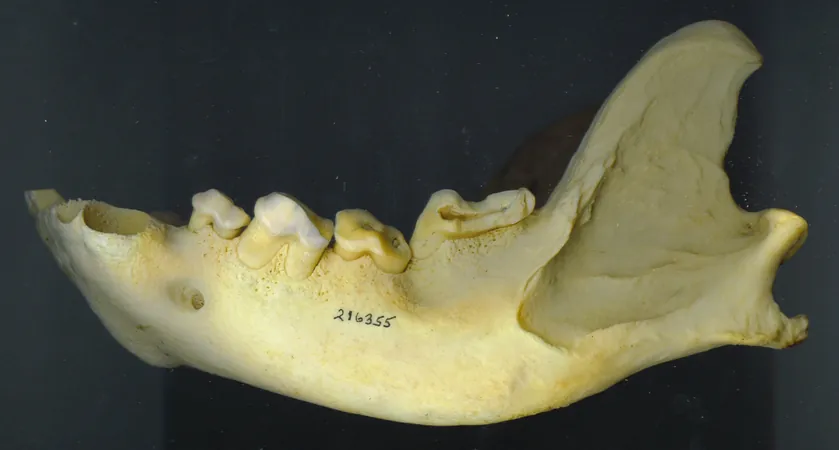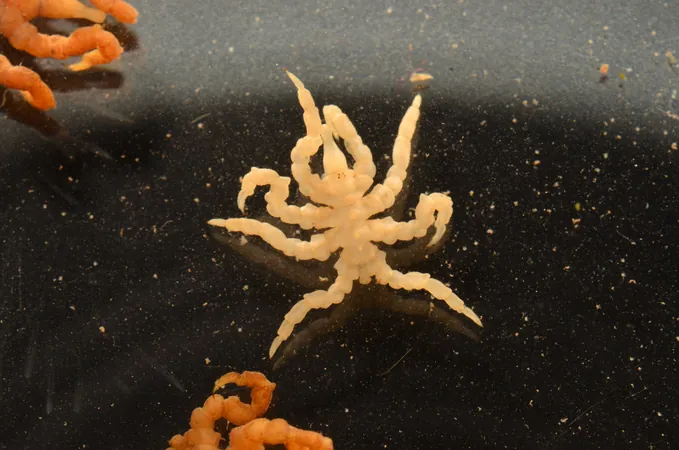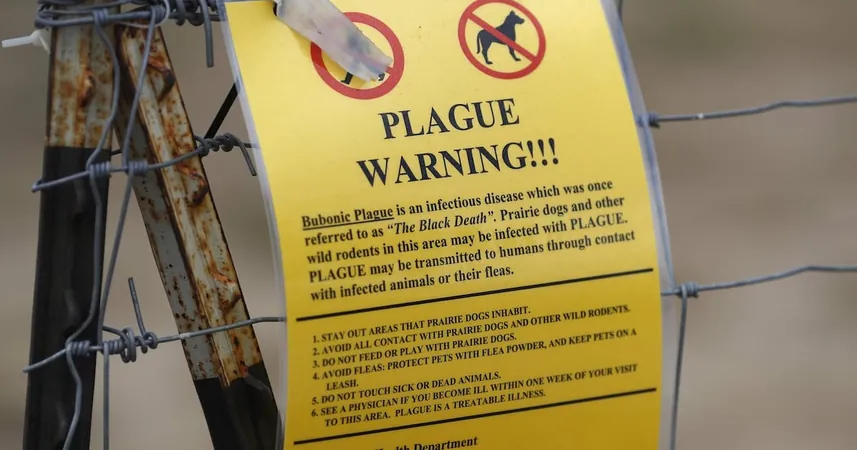
Shocking Discoveries About Teeth and Bites: How Hypercarnivores Adapt to Survive!
2024-11-11
Author: Emma
Groundbreaking Study by Dr. Jack Tseng
A groundbreaking study led by the esteemed Dr. Jack Tseng, recently published in the journal PeerJ, uncovers fascinating adaptations in the jaw function and tooth wear of hypercarnivorous mammals. These unique carnivores, which include some of the most formidable predators on Earth, face significant challenges as their teeth wear down, impacting their ability to deliver powerful bites.
Challenges of Non-Renewable Teeth
In the harsh world of survival, mammalian teeth do not regenerate, meaning species like big cats, scavengers, and bone-cracking hyenas must find ways to adapt over time. Dr. Tseng's research dives deep into this evolutionary puzzle, examining how these different hypercarnivores adapt biomechanically and behaviorally to counteract the loss of bite efficiency associated with tooth wear.
Research Focus
The research team scrutinized three major groups of carnivorans: meat specialists, such as lions and tigers; scavenging species that feed on carrion; and powerful bone-cracking predators like spotted hyenas. By analyzing morphofunctional data—including jawbone depth, bite efficiency, and jaw stress during biting—the study sought to determine how these animals modify their jaw mechanics as their teeth gradually deteriorate.
Key Findings: Bone-Cracking Hyenas
Perhaps the most striking finding was the behavior of bone-cracking hyenas. This species showed a notable increase in bite efficiency even as their teeth wore down, maintaining their predatory prowess without overloading their jaws—a vital adaptation for survival.
Behavioral vs. Biomechanical Adaptations
In contrast, the study found that meat specialists and scavenging hyenids did not exhibit significant biomechanical adjustments to tooth wear, pointing toward the likelihood that these groups may lean more on behavioral modifications to secure and process their food effectively.
Insights from Extinct Species: Hyaenodon
Dr. Tseng's team didn't stop at living species but also investigated the extinct carnivore Hyaenodon. Believed to share feeding adaptations with contemporary hyenas, Hyaenodon also showcased increased bite efficiency with worn teeth. However, researchers speculated that its adaptations may have stemmed more from specific evolutionary pressures unique to its time rather than similar life-history strategies observed in modern predators.
Conclusion & Future Research
As these findings challenge our understanding of predator adaptability, they open doors for further research into the mechanics of survival faced by carnivores in an ever-changing ecosystem. Are these adaptations a sign of evolutionary genius, or do they hint at the looming challenges hypercarnivores will face in the future? Only time will tell!









 Brasil (PT)
Brasil (PT)
 Canada (EN)
Canada (EN)
 Chile (ES)
Chile (ES)
 Česko (CS)
Česko (CS)
 대한민국 (KO)
대한민국 (KO)
 España (ES)
España (ES)
 France (FR)
France (FR)
 Hong Kong (EN)
Hong Kong (EN)
 Italia (IT)
Italia (IT)
 日本 (JA)
日本 (JA)
 Magyarország (HU)
Magyarország (HU)
 Norge (NO)
Norge (NO)
 Polska (PL)
Polska (PL)
 Schweiz (DE)
Schweiz (DE)
 Singapore (EN)
Singapore (EN)
 Sverige (SV)
Sverige (SV)
 Suomi (FI)
Suomi (FI)
 Türkiye (TR)
Türkiye (TR)
 الإمارات العربية المتحدة (AR)
الإمارات العربية المتحدة (AR)